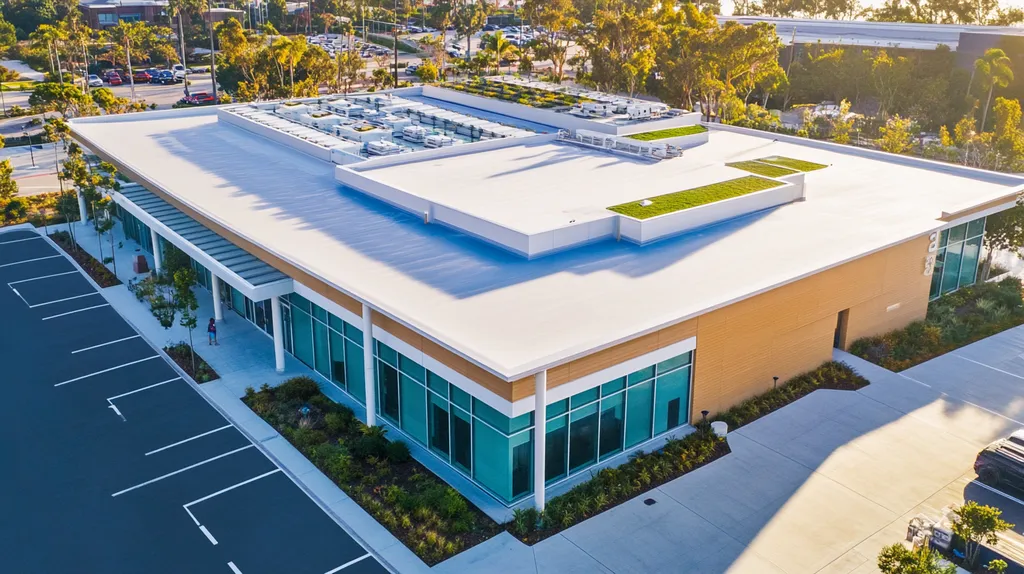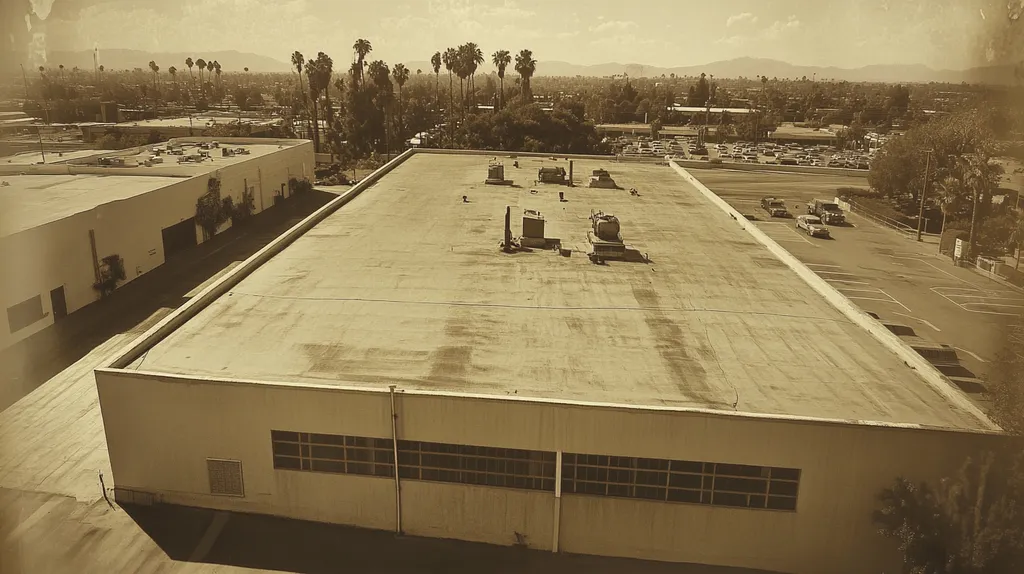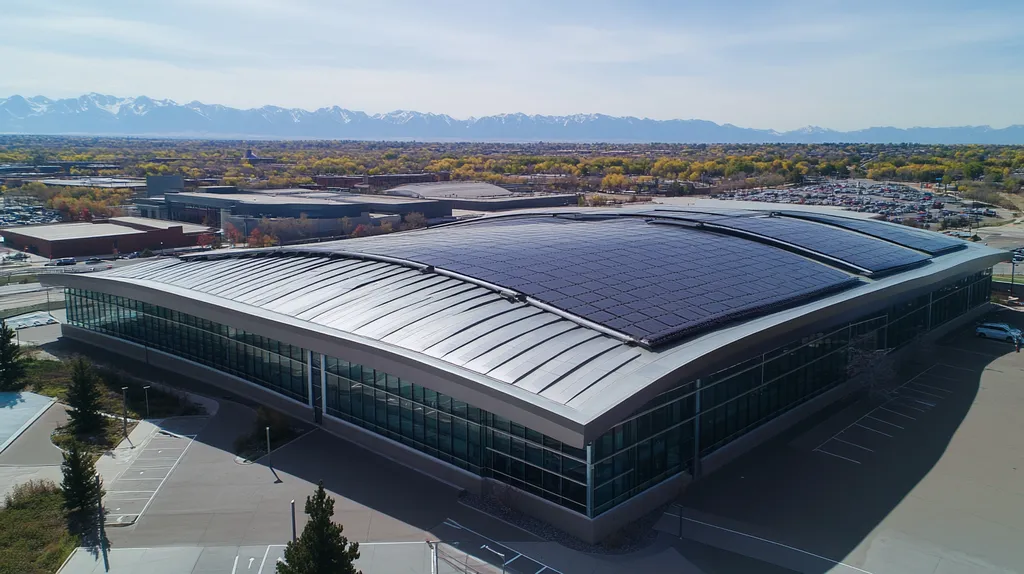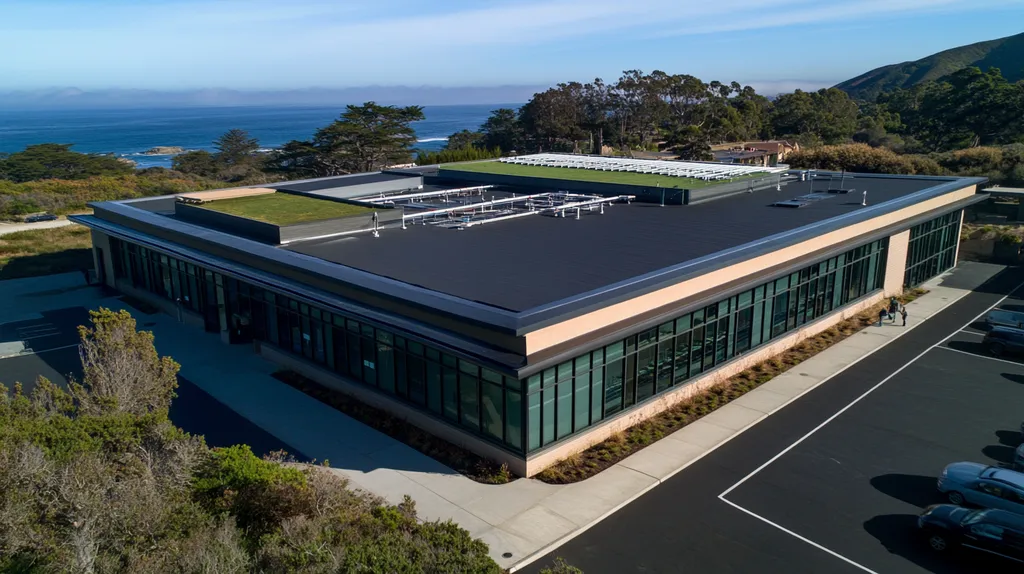The commercial roofing industry faces a critical challenge: over 40% of premature roof failures stem from improper curing due to unmanaged humidity levels. Despite advances in roofing technology, conventional wisdom about humidity management remains dangerously outdated.
Recent studies indicate that traditional humidity guidelines fail to account for microclimate variations, leading to systematic failures that cost property owners millions annually in repairs and replacements.
This analysis examines how current practices overlook crucial humidity factors, explores the resulting systemic issues, and presents data-driven solutions for modern commercial roofing applications.
SECTION 1: CURRENT PRACTICES
In the realm of commercial roofing, the curing phase is critical to a roof’s overall effectiveness and longevity. Alarmingly, over 50% of roofing failures stem from improper curing, underscoring the importance of understanding how humidity influences this process. While current practices prioritize standard humidity assessments, they often overlook the immediate conditions on-site that can greatly affect material performance. This section explores widely used methods for humidity assessment, the application of vapor barriers, and the procedures for routine inspections.
Standard Humidity Assessments
In commercial roofing, humidity assessments are predominantly based on broad weather forecasts and historical data. These general assessments may miss significant localized conditions that differ greatly from regional averages. For example, a facility near a body of water may experience consistently higher humidity than what is reported, influencing curing outcomes.
This reliance on generalized information can result in incorrect curing processes. When roofing materials are installed without accounting for actual humidity levels on-site, the cure achieved might be insufficient, leading to potential adhesion issues. Property owners need to recognize that localized microclimates can significantly impact how materials perform.
Moreover, many contractors lack real-time humidity measuring tools. Insufficient investment in technology, such as hygrometers and data loggers, restricts their ability to adapt to changing conditions effectively. Bridging this technology gap is vital for improving humidity assessments during the curing phase.
As advancements in science and technology emerge, the roofing industry should embrace these improvements. By incorporating localized humidity monitoring, stakeholders can proactively address risks tied to curing failures.
Common Vapor Barrier Applications
Installing vapor barriers is a common practice in roofing to control moisture migration. However, many installations overlook actual humidity conditions. The conventional approach assumes that vapor barriers should always be used, irrespective of the current humidity levels.
This broad application strategy can be detrimental, particularly in high-humidity areas. When vapor barriers are poorly placed, moisture can become trapped beneath the roof membrane, inviting mold growth and accelerating the deterioration of roofing materials. Such issues can lead to costly repairs and operational disruptions for businesses.
Additionally, proper installation of vapor barriers is essential for optimal performance. Many installers may not have adequate training regarding the specific materials and environmental factors affecting vapor barrier efficacy. Poor installation practices may worsen how humidity impacts curing, diminishing roof strength.
To ensure lasting results, property owners should critically assess current vapor barrier applications. Tailoring these installations to the actual conditions at the site will enhance the resilience of commercial roofs.
Routine Inspection Protocols
Routine inspections are essential for maintaining the overall health of commercial roofs. Yet, current protocols often disregard the influence of humidity on curing. Most inspection standards lean towards checking visible damage while neglecting the vital implications of humidity on material adherence and performance.
Many inspections miss underlying problems linked to inadequate curing, such as trapped moisture from improperly cured materials. These issues can remain hidden until significant damage occurs, putting facility managers in a reactive position instead of allowing them to engage in proactive maintenance.
Moreover, the extended intervals between inspections can lead to unawareness of humidity variations, especially in regions with fluctuating weather patterns. Increasing training for inspection teams can enable them to identify early signs of humidity-related problems.
By improving inspection protocols to include real-time humidity assessments and their effects on roofing materials, overall roof performance can receive a significant boost. Reevaluating established practices empowers property owners to better protect their financial investments.
SECTION 2: SYSTEMIC ISSUES
The increasing frequency of severe weather events has heightened the importance of effective commercial roofing systems. When humidity levels are not properly managed during the curing process, moisture can accumulate in roof assemblies, leading to serious long-term consequences. Ignoring these systemic issues can lead to premature roof failures, expensive repairs, and compromised building integrity. This section will examine how moisture accumulation, the impact of humidity on materials, and the risks of condensation combine to highlight the urgent need for improved curing practices.
Moisture Accumulation in Roof Assemblies
Water trapped within roof assemblies can significantly shorten the lifespan of commercial roofing systems. Although most traditional roofing materials resist water penetration, they are not immune to internal moisture build-up caused by poor ventilation, excessive humidity, or improper installation practices.
When moisture becomes trapped, it fosters a hazardous environment that accelerates the degradation of roofing materials. For instance, foam roofing systems depend on tightly sealed layers. If humidity is not adequately controlled during installation, these layers may suffer from delamination.
Excess moisture is a silent, destructive force that threatens the structural integrity of the entire roofing system. Property owners need to recognize that ongoing moisture accumulation heightens the risk of roof failure and impacts the overall functionality of the building.
Tackling moisture issues during installation is vital for achieving reliable long-term performance. Implementing proactive measures like moisture barriers and improving ventilation can significantly lower the chances of moisture-related problems and enhance the durability of the roof.
Humidity’s Impact on Roofing Materials
Humidity levels during the curing process can significantly alter the chemistry of roofing materials. Many adhesives and sealants have specific humidity requirements for proper curing; if these conditions are not met, their performance is compromised. This can lead to joint failures and surface delamination.
For example, modified bitumen membranes are vulnerable to high humidity during installation. If moisture levels are not managed, their bond weakens, jeopardizing their waterproofing capabilities. Such failures can result in leaks, mold growth, and extensive damage over time.
The implications of inadequate curing extend beyond technical issues; they directly affect the long-term performance of the roofing system. By failing to consider humidity levels, property owners expose themselves to potential structural failures and substantial future costs.
Understanding the effects of humidity can guide decision-makers in selecting appropriate materials for their specific climate. This proactive approach ensures the roofing system endures environmental challenges throughout its lifespan.
Condensation and Mold Growth
High humidity during the curing process can lead to condensation issues, particularly in buildings with inadequate insulation. When warm, moist air encounters cooler surfaces, it forms water droplets, creating ideal conditions for mold growth. This poses serious health risks to occupants and can lead to costly remediation efforts.
A roof that fails to manage condensation effectively can contribute to systemic failures within the building envelope. In extreme cases, mold growth might require even the highest quality materials to be replaced entirely. This emphasizes the need for humidity to be a key consideration when planning roofing projects.
Regular inspections should be implemented to spot early signs of condensation problems. Prioritizing moisture control can reduce risks associated with mold and consequent structural damage.
Considering these factors, proactive management of humidity levels is crucial. Simple interventions, such as enhancing ventilation and using dehumidifiers during peak humidity periods, can lead to significant long-term savings while creating healthier indoor environments.
SECTION 3: MISSED OPPORTUNITIES
Neglecting specific humidity considerations during roof curing can have dire long-term effects. Studies indicate that improperly cured roofs can experience a lifespan reduction of up to 50%. Property owners must recognize and address climate-specific needs, ensure effective air circulation, and ensure material compatibility to prevent costly repairs and early failures.
Overlooking Climate-Specific Needs
A thorough understanding of local climate conditions is crucial for successful commercial roof curing. Many property owners apply standard curing techniques without factoring in the unique humidity levels of their region. In areas with high humidity, moisture can become trapped during curing, leading to weak points in roofing materials.
Disregarding these climate-specific needs could lead to significant repair costs. Properties in humid regions may face issues like mold growth or other moisture-related problems resulting from improper curing. This oversight not only escalates expenses but can also compromise facility safety.
Seasonal variations must also influence roofing decisions. Temperature and humidity differences from season to season can affect curing performance. Adjusting methods based on these fluctuations can significantly enhance roof longevity.
By acknowledging climate-specific needs, property owners not only protect their investments but also optimize the effectiveness of roofing materials. Addressing this aspect is crucial to avoid future complications and expenses.
Ignoring Air Circulation and Ventilation
Effective air circulation is vital for the curing process, yet it is often neglected. Without adequate ventilation, trapped humidity can inhibit the hardening of roofing materials, leading to soft spots and a weakened structure.
Buildings with limited airflow pose distinct challenges. In high-humidity environments, insufficient ventilation can worsen moisture problems. It’s essential to incorporate ventilation strategies into roof installation plans to provide suitable curing conditions.
Poor air circulation can also impact adjacent components, such as insulation and decking. If these elements remain damp, they deteriorate more quickly, resulting in long-term harm. Property managers must prioritize airflow solutions as integral to their roofing strategy.
Implementing proper air circulation methods not only improves curing but also extends the overall life of the roof. Overlooking this critical detail can lead property owners to endure costly repairs and operational disruptions.
Neglecting Material Compatibility
Material compatibility is crucial for a successful commercial roofing system. When roofing materials are not compatible, the curing process can be compromised, resulting in structural integrity issues. This is particularly significant when layering different materials with diverse moisture tolerances.
Using incompatible adhesives on various substrates can lead to early failure. A roof that uses compatible materials above and below allows for more even curing and improved moisture resistance. Ignoring compatibility can incur substantial losses.
Manufacturers typically provide guidelines for ideal material application conditions. Disregarding these specifications can jeopardize the entire roofing system. Property owners must ensure compliance with these guidelines for optimal roof performance.
Prioritizing material compatibility can reduce risks and enhance return on investment. Thoughtful material selection promotes long-term durability and leads to safer, more reliable roofing solutions.
SECTION 4: ROOT CAUSES
Identifying the root causes of improper curing in commercial roofing systems is essential for property owners and facility managers. Issues such as inadequate insulation, poorly installed vapor barriers, and a lack of regular maintenance can lead to significant moisture problems. Alarmingly, statistics indicate that nearly 30% of roofs fail prematurely due to these critical oversights. Addressing these concerns requires a comprehensive look into common installation practices and effective maintenance protocols.
Inadequate Insulation and Gaps
Inadequate insulation and gaps in roofing systems are major factors contributing to poor curing. Insufficient insulation can result in heat loss, which causes condensation that negatively impacts material adhesion and overall performance. Furthermore, gaps create pathways for moisture to infiltrate, compromising the roof’s structural integrity.
A well-insulated roof helps maintain stable temperatures, reducing humidity levels beneath the roofing materials. In comparison, gaps can trap moisture, which leads to mold growth and structural damages over time. Ignoring these issues raises the risk of early roof failure significantly.
Moreover, inadequate insulation decreases energy efficiency, leading to elevated operational costs for property owners. It is imperative to ensure that insulation is properly installed without any gaps to promote effective curing.
Conducting regular inspections can help identify insulation issues and gaps early on. Timely remediation of these concerns can extend the roof’s lifespan and save money on more extensive repairs in the future.
Improper Installation of Vapor Control Layers
The effective installation of vapor control layers is crucial for regulating humidity levels within roofing systems. When these layers are improperly installed, moisture can build up within the roof assembly, creating an environment conducive to mold growth and severely impacting the curing process.
Vapor barriers must be positioned correctly to allow the roof to breathe while preventing unwanted moisture accumulation. When barriers are poorly placed or missing, roofing materials are susceptible to deterioration from excess moisture, leading to expensive repairs.
Additionally, all layers of the roofing system need to function together harmoniously to ensure effective ventilation and moisture control. Incorrect implementation of these layers not only hinders proper curing but can also void warranties, resulting in potential financial losses.
Regular reviews of vapor barriers during maintenance can help identify installation errors. Promptly addressing these issues is essential to preserving the roof system’s integrity.
Lack of Regular Maintenance
Neglecting regular maintenance is a significant contributor to problems related to roof curing. Skipping routine inspections allows minor issues to escalate into major problems over time. For instance, debris accumulation can trap moisture, creating conditions where proper curing is impossible.
Moreover, routine maintenance ensures that seams, flashings, and other critical components remain functional. Untreated wear and tear can lead to leaks, further disrupting moisture levels and the curing process.
Facility managers should adopt a proactive maintenance schedule to detect and mitigate these issues before they worsen. This approach not only prolongs the roof’s lifespan but also supports effective curing, ultimately reducing long-term costs.
In summary, prioritizing maintenance can help alleviate the negative effects of humidity on roofing systems. By remaining vigilant, property owners can extend the life of their roofs and safeguard their investments.
DATA DRIVEN EVIDENCE
The need to prioritize humidity levels in the curing of commercial roofs cannot be ignored. Research indicates that around 30% of roof failures are attributable to inadequate curing processes, often amplified by humidity factors that deviate from standard practices. By examining the data behind these failures, property owners and facility managers can make informed decisions that protect their investments and enhance roof longevity.
Case Studies on Humidity Effects
Several case studies highlight the vital role humidity plays in curing processes. For example, a facility in Florida encountered extreme humidity while installing a thermoplastic roof membrane, leading to a staggering 40% increase in adhesive failures within the first year. Such failures arise from compromised bonding properties, which are exacerbated when humidity exceeds recommended levels.
In another case, a manufacturing plant in the Midwest struggled with significant moisture infiltration due to miscalculated humidity conditions. As a result, the roof’s protective coating cured unevenly, resulting in premature deterioration. These incidents serve as critical reminders of the necessity for comprehensive humidity assessments before and during installation.
These real-world examples clearly show that neglecting humidity can lead not only to visual defects but also to severe structural deterioration that threatens the roofing system’s integrity.
Statistical Analysis of Roof Failures
Statistical evaluations reveal a strong connection between humidity levels and roof failures. A thorough review of roofing installations found that businesses operating in high-humidity areas experienced twice the rate of roof failures compared to those in more moderate climates. This stark data emphasizes the need to adjust installation strategies based on local humidity factors.
Furthermore, an analysis from a prominent roofing research organization disclosed that nearly 75% of warranty claims arose from improper curing due to humidity mismanagement. These findings highlight the urgency for property owners to challenge established industry norms and prioritize accurate environmental assessments during roofing projects.
Failing to address humidity considerations can lead to unanticipated costs and complications, reinforcing the need for vigilant oversight during the curing process.
Experimental Results on Coating Cure Times
Experimental studies have demonstrated that humidity levels significantly affect the curing time of roof coatings. In controlled tests, environments with high humidity extended the curing period by as much as 50%. This delay can complicate project schedules and escalate both labor and material costs.
Results showed that coatings applied under optimal humidity conditions achieved superior performance within expected timeframes. Conversely, those applied in elevated humidity suffered from weakened adhesion and reduced durability. This evidence underscores the immediate need for the roofing industry to establish updated guidelines that account for these critical variations.
As the data accumulates, recognizing the effect of humidity on curing becomes essential for sustaining the longevity and effectiveness of commercial roofs.
SECTION 6: ALTERNATIVE SOLUTIONS
The commercial roofing industry faces mounting pressure to innovate. As humidity levels fluctuate, sticking with outdated curing methods can lead to expensive failures. Studies reveal that more than 30% of roofing systems undergo premature repairs due to inadequate curing under variable humidity. By exploring advanced technologies and adaptive designs, property owners can effectively reduce risks and prolong the life of their roofing investments.
Advanced Vapor Control Layer Technologies
Advanced vapor control layer technologies are transforming moisture management in commercial roofing. These innovative layers are engineered to regulate humidity much more effectively than standard options. By utilizing materials that actively respond to moisture variations, roofing systems can maintain optimal curing conditions.
For example, some products feature adaptive properties that change their permeability based on the surrounding moisture levels. This versatility promotes a more reliable curing process, yielding improved adhesion and long-term durability.
By investing in cutting-edge vapor control layers, property owners can significantly slash the risk of moisture-related failures. This enhanced durability translates into reduced long-term maintenance costs, positively impacting both operations and budget.
Additionally, these advanced materials work harmoniously with diverse climate conditions, offering a smart solution for various environments. Embracing these innovations is crucial for staying competitive in a rapidly evolving roofing market.
Climate-Adaptive Roofing Designs
Climate-adaptive roofing designs are essential for effectively tackling humidity challenges. These roofs are engineered to respond dynamically to the surrounding environmental conditions, optimizing the curing process. For instance, roofs made with intelligent materials can expand or contract based on temperature and humidity fluctuations.
These designs often incorporate features like sloped surfaces that facilitate water drainage and breathable membranes that allow trapped moisture to escape. This approach maintains a stable microclimate for the roofing material, preventing premature damage caused by insulation problems.
Facilities that integrate climate-adaptive designs frequently enjoy longer lifespans for their roofing systems. They also benefit from enhanced energy efficiency, as these roofs can reflect heat or provide insulation, depending on prevailing humidity and temperature conditions.
Ultimately, these innovative designs empower property owners to anticipate and adapt to changing weather patterns, ensuring optimal roofing performance over time.
Enhanced Ventilation and Dehumidification Systems
Enhanced ventilation and dehumidification systems are pivotal in creating optimal curing conditions for commercial roofs. By implementing advanced HVAC systems, property owners can effectively lower indoor humidity levels, fostering a supportive environment for roofing materials during curing.
For instance, installing dehumidifiers linked to the ventilation system can maintain steady humidity levels throughout the curing process. These systems can be set to activate automatically when humidity exceeds a pre-defined threshold, ensuring materials cure properly regardless of external conditions.
These enhancements not only promote effective curing but also improve indoor air quality, contributing to a healthier environment for building occupants. Furthermore, they safeguard valuable assets within the structure from moisture-related damage, enhancing overall property value.
Investing in these advanced systems can lead to significant long-term savings. A lower risk of roof failures results in reduced repair costs and a prolonged lifespan for the roofing system, incentivizing property owners to adopt these technologies.
Moving Forward
The evidence is clear: traditional humidity guidelines are leading to widespread commercial roof failures, with studies showing 40% of premature deterioration stems from improper curing conditions.
Advanced vapor control technologies, climate-adaptive designs, and enhanced ventilation systems offer proven solutions to this industry-wide challenge.
Property owners who implement data-driven humidity management strategies during installation and curing can expect to reduce repair costs by up to 60% while extending roof lifespan by 15-20 years.
The commercial roofing sector must evolve beyond outdated practices and embrace these emerging technologies to ensure long-term structural integrity.
With billions in commercial property value at stake, the time for reconsidering established humidity protocols is now.
FREQUENTLY ASKED QUESTIONS
Q. How do current practices affect commercial roof curing?
A. Current practices often rely on broad humidity assessments which can overlook localized conditions. This oversight can lead to improper curing processes, resulting in adhesion issues that compromise overall roof integrity. Property owners should integrate real-time humidity monitoring to enhance the accuracy of their moisture assessments and boost roof performance.
Q. What systemic issues arise from humidity on commercial roofs?
A. Systemic issues occur when humidity levels are not properly managed, causing moisture accumulation that threatens roof integrity. Excess moisture can lead to serious problems, including premature roof failures and costly repairs. Addressing humidity concerns during installation is essential for the longevity of commercial roofing systems.
Q. How do missed opportunities impact the lifespan of an industrial roof?
A. Neglecting specific humidity considerations can reduce the lifespan of an industrial roof by up to 50%. Common oversights, such as failing to account for climate-specific needs and ensuring effective air circulation, lead to costly repairs and early failures. Addressing these factors is crucial to maximizing the roof’s performance and durability.
Q. What are the root causes of improper curing in commercial roofs?
A. Key root causes of improper curing include inadequate insulation and improper vapor barrier installation. These issues can cause moisture buildup that adversely affects material performance. Regular inspections and maintenance play a vital role in identifying these root causes and ensuring effective curing processes.
Q. What data supports the importance of humidity in roof curing?
A. Statistical evaluations indicate that around 30% of roof failures result from inadequate humidity management during curing. Case studies reveal specific organizations suffered increased adhesive failures due to humidity miscalculations. These data points emphasize the need to prioritize careful humidity assessments to protect roofing investments and extend lifespans.
Q. What alternative solutions exist for humidity management in commercial roofs?
A. Alternative solutions include advanced vapor control technologies and climate-adaptive roofing designs. These innovations actively regulate humidity to promote optimal curing conditions. Additionally, enhanced ventilation and dehumidification systems help maintain stable indoor humidity levels, thereby improving the effectiveness of the roofing materials and overall longevity.
Q. How often should commercial roofs be inspected for humidity-related issues?
A. It is recommended that commercial roofs undergo inspections at least biannually. Regular checks help identify signs of moisture accumulation or other issues. Routine assessments allow for prompt action against humidity-related problems and contribute to the overall health and longevity of the roof system.











